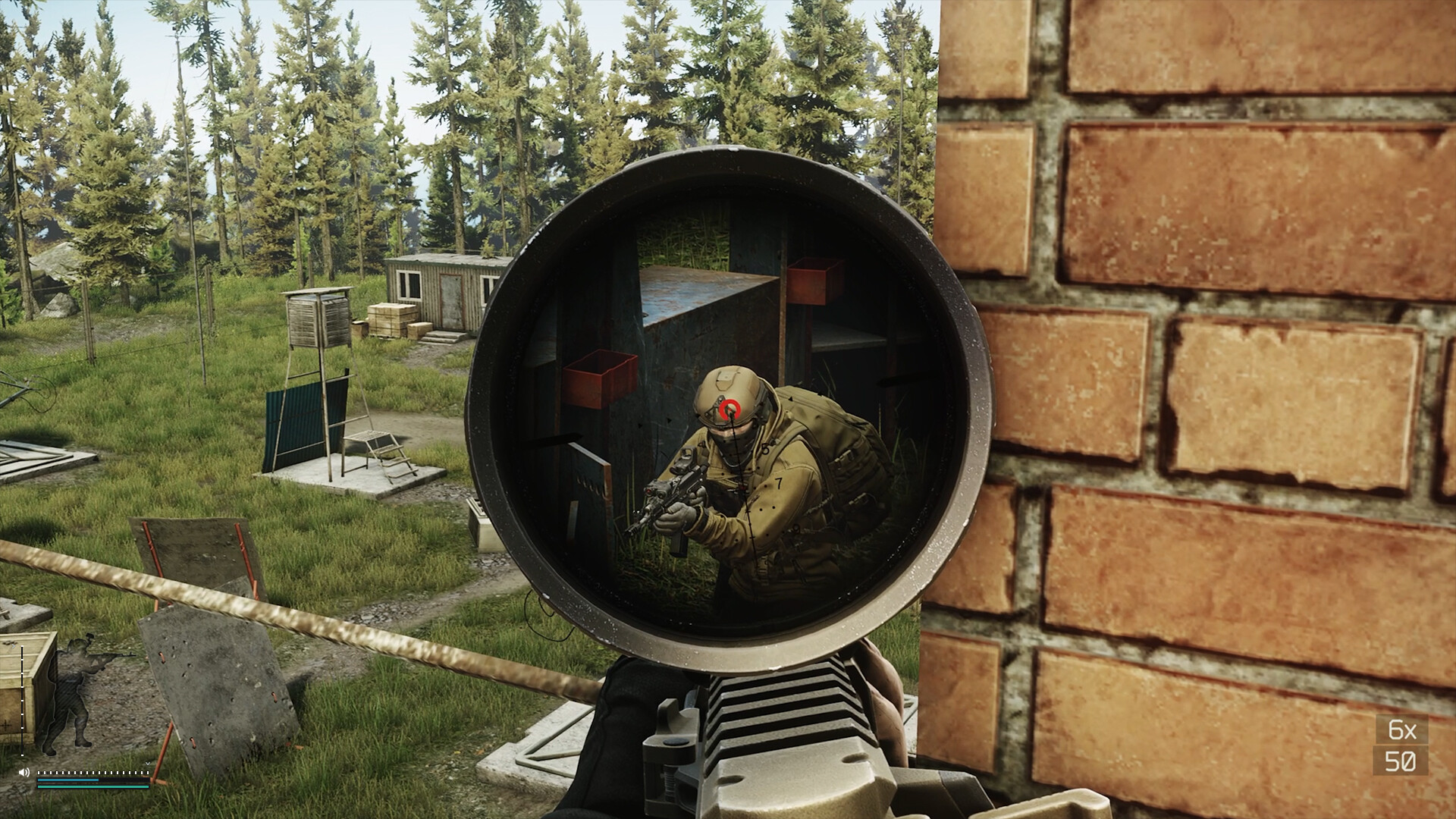Our Verdict
Labyrinth of the Demon King offers familiar first-person retro dungeon crawling, but distinguishes itself with its overpowering—almost unbearable—mood of dread.
PC Gamer's got your back
What is it? A grim first-person dungeon crawler heavily inspired by King's Field and early survival horror
Release date May 13, 2025
Expect to pay $20/£16.75
Developer J. R. Hudepohl
Publisher Top Hat Studios
Reviewed on RTX 3060 (laptop), Ryzen 5 5600H, 16GB RAM
Steam Deck Official status is "unknown", but it works brilliantly out of the box
Link Steam
Labyrinth of the Demon King is a cruel, miserable dungeon crawler set in a collapsing feudal Japan. I'm a lowly foot soldier, or ashigaru, seeking to avenge the murder of my lord and his army at the hands of the demon king. As you can imagine, the odds are hopelessly stacked against me. My katana is broken, I tire easily, and the labyrinth I'm forced to navigate is the most depressing and confusing entanglement of narrow halls and non-descript rooms I've visited since the PS1 era. Not to mention that the demon king is openly mocking me with his arcane puzzles and repulsive yokai.
This nasty 15-hour adventure belongs to a new generation of dungeon crawlers heavily indebted to King's Field, a dark fantasy FromSoftware series that prefigured the Dark Souls games. Labyrinth of the Demon King follows in the footsteps of Lunacid, which popularised the revival, and there are tonnes of similar forthcoming games on my Steam wishlist at the moment including Hark the Ghoul and Monomyth. Labyrinth trades Lunacid's oft-lurid VHS fantasy for an oppressive commingling of Buddhist folklore and survival horror grime, while also advancing—albeit incrementally—the complexity of the combat you can usually expect in games of this ilk.
About that combat: I was ready to give up Labyrinth of the Demon King after about the two-hour mark. The game forces a combat tutorial straight out of the gate, but I was nevertheless getting my arse handed to me. My ashigaru is tortoise-slow, with a stamina bar that depletes at an alarming clip with every flailing, poorly timed swing of my katana. Dodging once doesn't deplete my miserly stamina bar, but if I dodge again within a four-second cooldown, it does, and the penalty is enormous. If I happen to get hit by any of the squealing, maddened figures whose attacks I can parry inside a tiny window, I lose my cool and death is certain.
But then I learn to kick. There is a kick button, and for a long time I neglected to use it. Kicking an enemy staggers them for long enough to get a risk-free thrust in, and takes the edge off the otherwise overwhelmingly tense fights. I eventually learned that the combat was really just testing my ability to stay cool during terrifying encounters. Once this came together—and once I started to understand some of the other quirks of the game, such as the bonfire-like save system, and the importance of running away—it wasn't long before I flipped. Not only was I not going to drop Labyrinth anymore, I became obsessed with it.
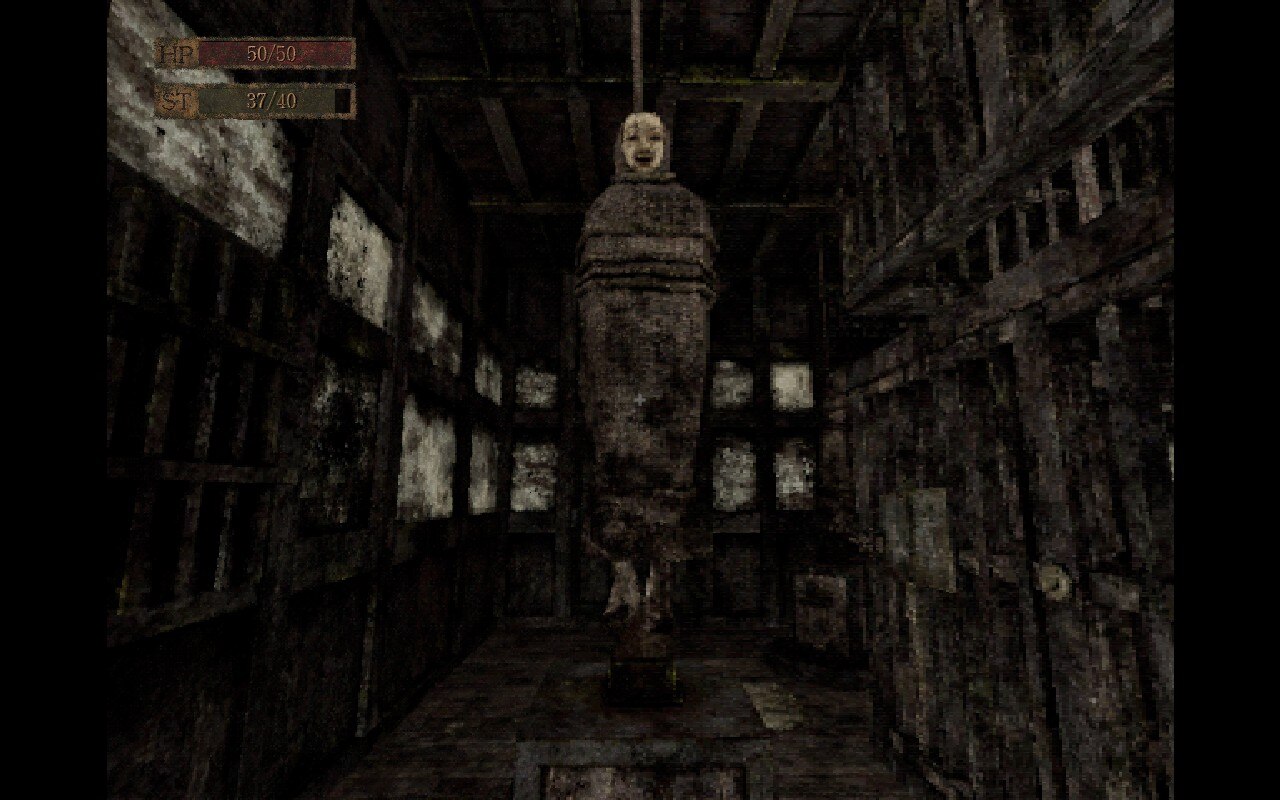
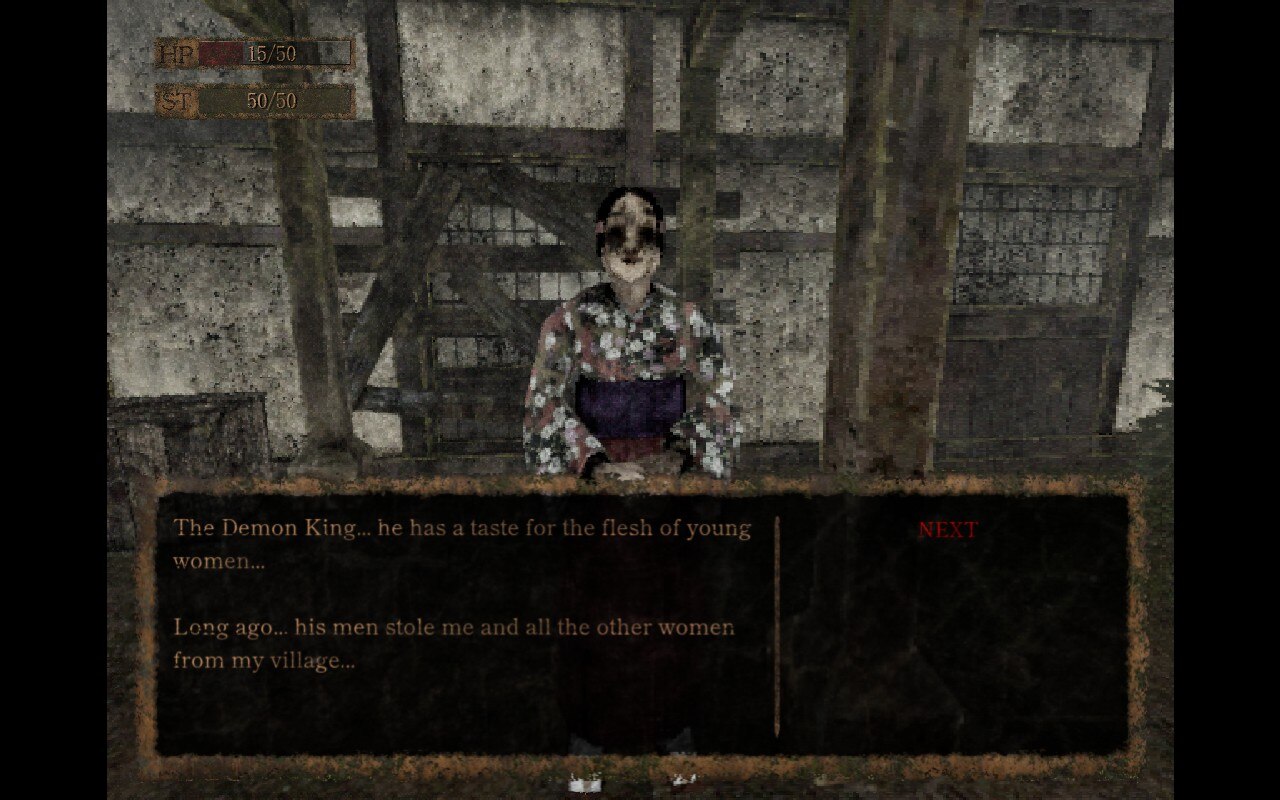
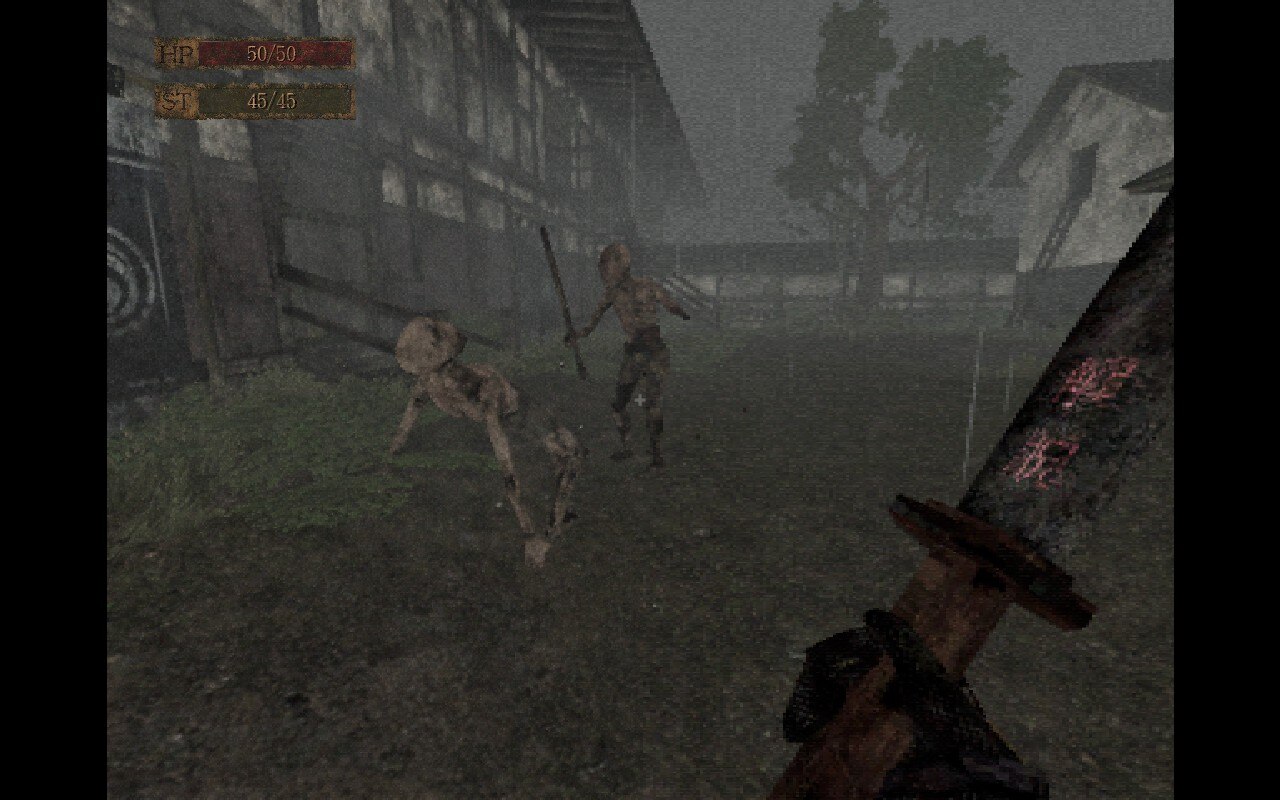
It's surprisingly easy for this to happen. The demon's labyrinth is split into four major areas, and aside from some refreshing outdoor sections, it pretty much all looks the same. Every surface is caked in an unspecified brown-grey ooze. Doorways and occasionally whole halls can be blocked by mysterious breathing gore piles. Many doors, of course, are jammed or locked. It's an oppressively bleak and monotonous world to spend a long time in, and yet, the illogically twisting halls and ruined rooms do manage to leave an impression, so much so that by the end I felt I knew the map fairly well.
Meanwhile, the enemies themselves—and even the NPCs—are rendered inscrutable by their nascent 3D stylings. It took me a while to realise a merchant cat, for instance, was a cat. When it comes to the demons, the chunky pixels renounce detail and subtlety in favour of a generalised fetidness: it feels like I'm slashing away (or running away) from a mass of horrific sentient polyps, and that's somehow scarier than if it were a meticulously polygonal take on the akaname.
It’s probably worth dwelling on this stylistic decision. At least a half-dozen horror games release on Steam every week that plunder the wobbly unrealness of mid-’90s 3D graphics. It’s become a shortcut towards a certain disarranging horror effect that more modern presentations can’t hope to match. But in the case of Labyrinth, the graphics are actually murkier and more degraded than the '90s material it channels. This makes the enemies scarier and more inscrutable, yes, but it also lends the game a homebrew ruthlessness reminiscent of video nasties. It overall feels like something no one in the '90s would dare to bring to market: it has the sense of something forbidden about it.
Keep up to date with the most important stories and the best deals, as picked by the PC Gamer team.
But as terrifying as the beasts and hallways are, by mid-game I felt far less threatened. There are a bunch of different weapons, all upgradable, ranging from my starter katana through to an otsuchi ("very heavy hammer"), a Great Dao ("massive sword"), and naginatas, axes, spears—even a rifle, all with different attack speeds and stamina trade-offs. There are also talismans, which I mostly forgot to use, but which have both offensive and defensive capabilities. The difficulty tapers off by the halfway mark, mostly thanks to familiarity with the combat system, but upgrading my health and stamina certainly helped (trust me: prioritize the latter), and so did an understanding of the movement patterns of the roaming Nuribotoke, a stalking figure modelled after Resident Evil's Mr. X.
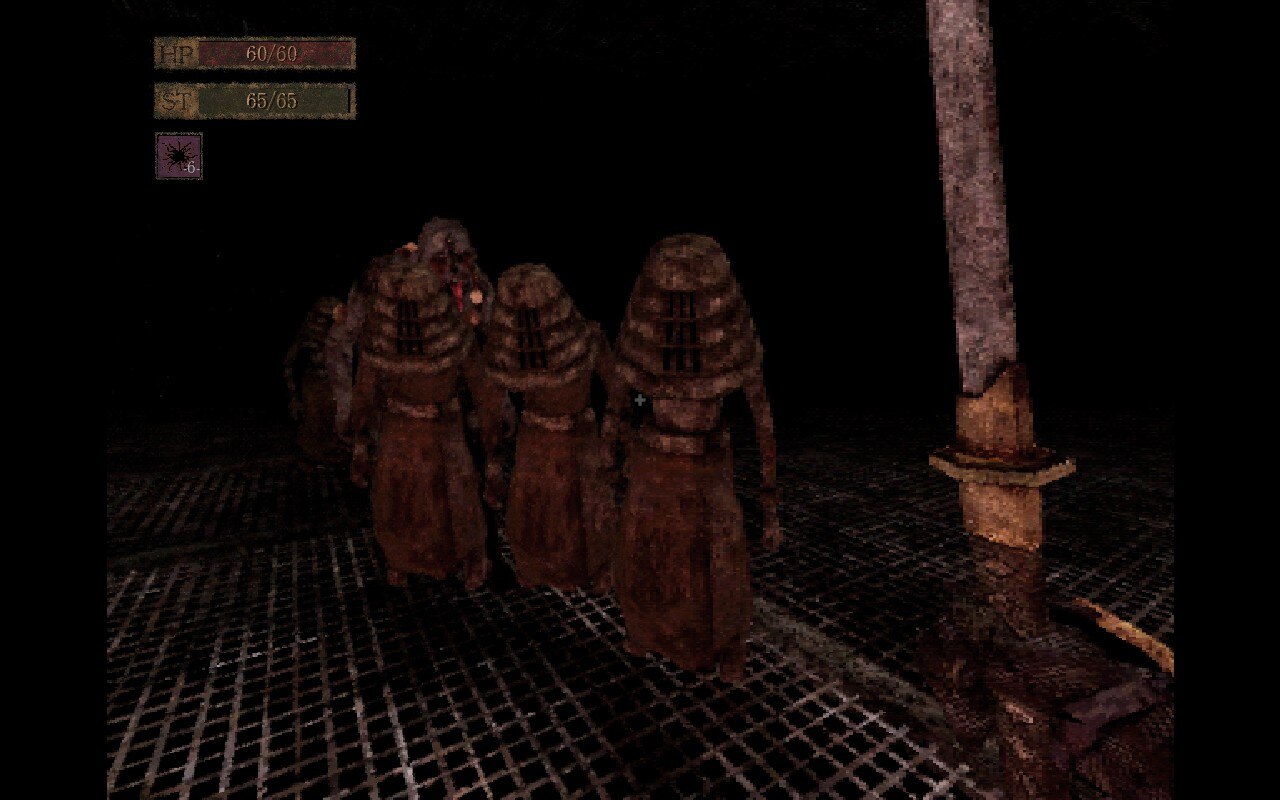
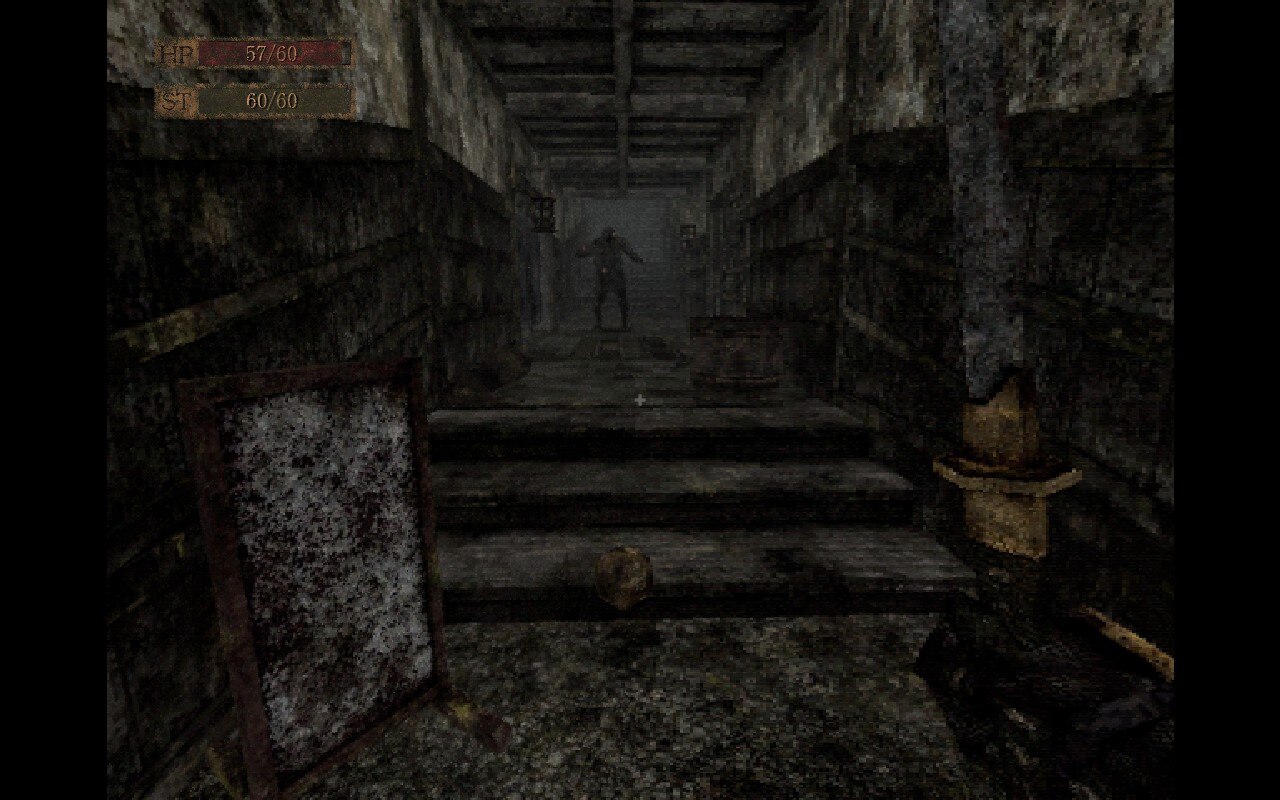
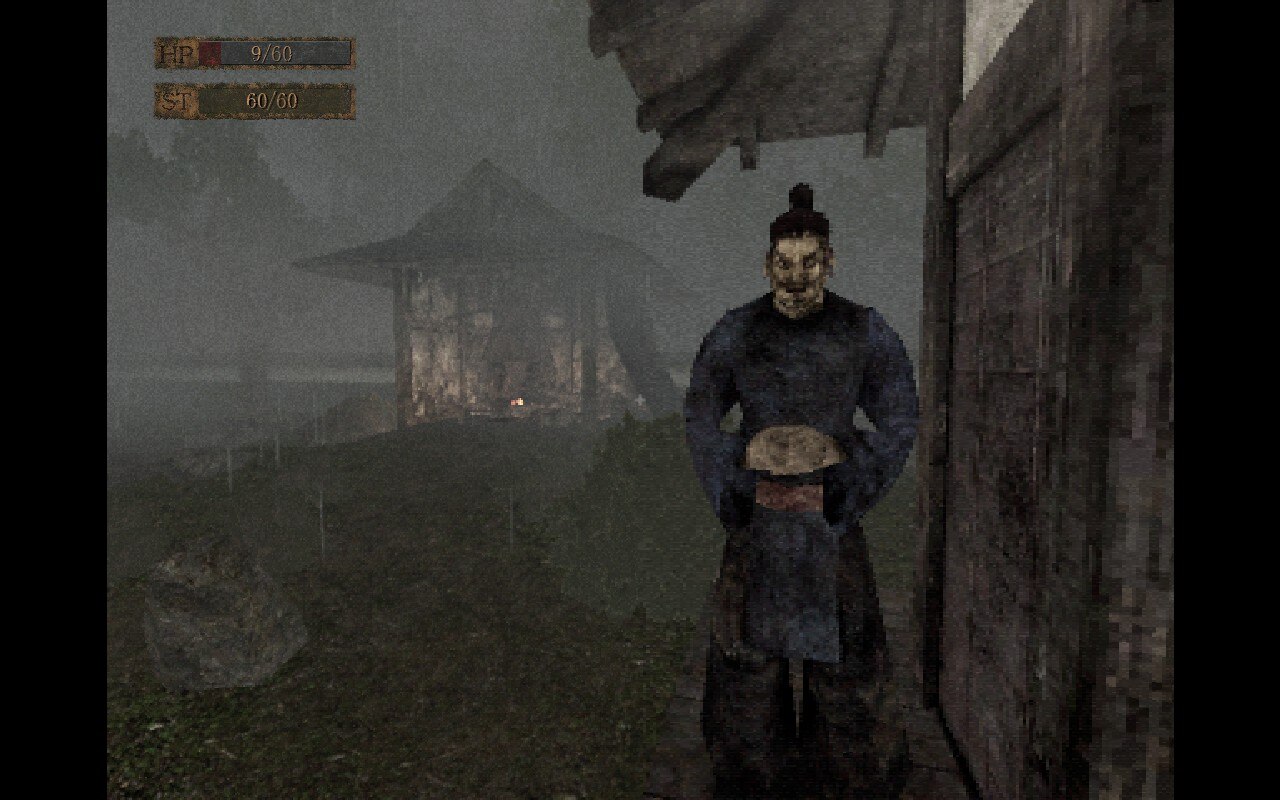
There aren't a lot of puzzles but they all make a dim kind of sense, usually requiring a lot of backtracking across the map. One of my colleagues tended to struggle with the ones I found easy, and vice versa, but all have solutions any halfway observant player will solve with no trouble. Many clues are hidden in scrolls found in the world, and reading these can be as discomforting as roaming the halls: beware some disturbingly detailed descriptions of the Buddhist Eight Hells.
Labyrinth of the Demon King is predominantly the work of a single person, J. R. Hudepohl, and it definitely feels like the result of a productive obsession. I don't know if a team could make something this quietly disturbing without someone piping up to ask: how will people cope? I won't lie: as I watched the credits roll on Labyrinth of the Demon King I felt an unutterable sense of relief that I would never need to roam those halls again, with their drones of mysterious provenance, and the wheezing of their gross denizens. But I'm sure glad I did at least once: this is the most potent weird horror we're likely to see in 2025.
Labyrinth of the Demon King offers familiar first-person retro dungeon crawling, but distinguishes itself with its overpowering—almost unbearable—mood of dread.

Shaun Prescott is the Australian editor of PC Gamer. With over ten years experience covering the games industry, his work has appeared on GamesRadar+, TechRadar, The Guardian, PLAY Magazine, the Sydney Morning Herald, and more. Specific interests include indie games, obscure Metroidvanias, speedrunning, experimental games and FPSs. He thinks Lulu by Metallica and Lou Reed is an all-time classic that will receive its due critical reappraisal one day.
You must confirm your public display name before commenting
Please logout and then login again, you will then be prompted to enter your display name.


